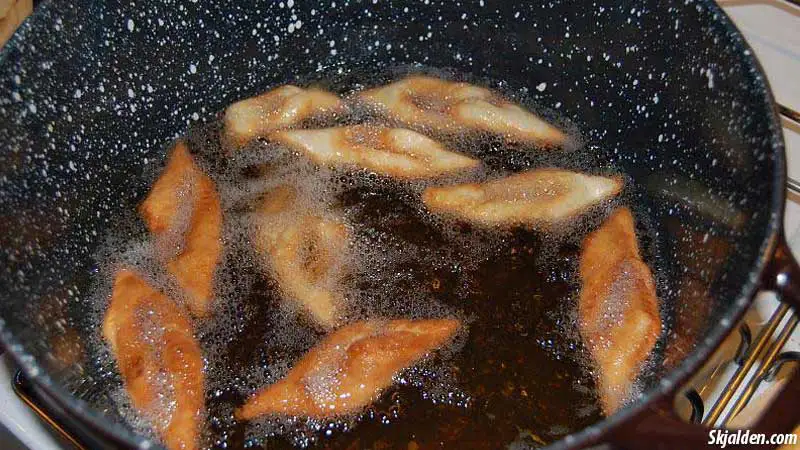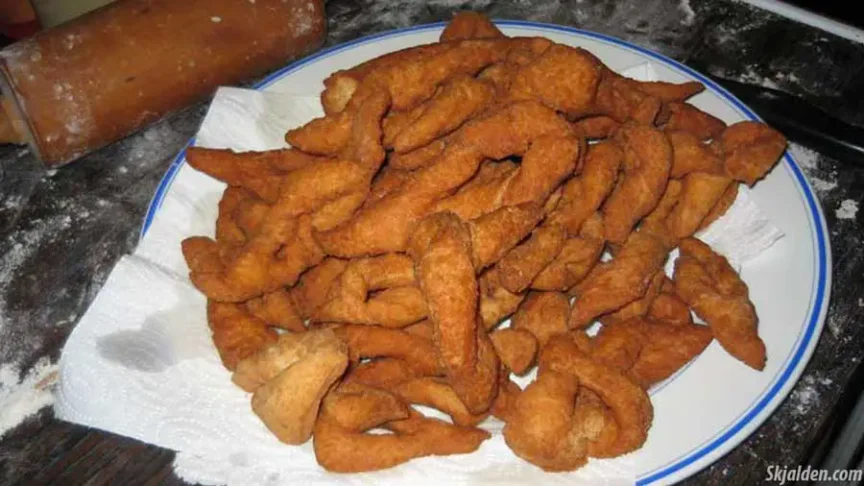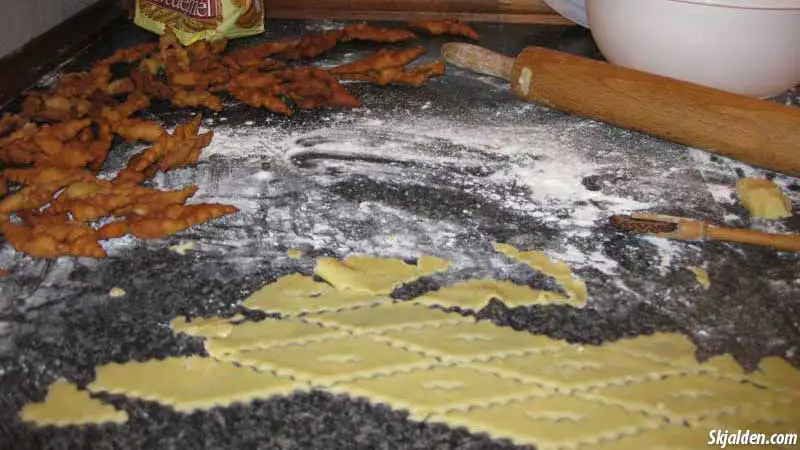Klejner is a type of fried pastry that Danes enjoy during the holiday season. Originating in the 14th century, these cookies are unique because they are fried instead of baked, giving them a distinctive crispy texture. This method of cooking the dough in oil is a tradition that predates modern kitchen ovens.
Although the exact origins of Klejner are unknown, the first mentions date back to the 14th century in Denmark. More detailed recipes and broader documentation appeared in Danish and Icelandic cookbooks during the 18th and 19th centuries. These simple cookies, made from flour, eggs, and sugar, reflect a shared culinary history that connects these countries. Klejner’s recipe and preparation methods have remained relatively unchanged, highlighting the simplicity that lets the basic ingredients shine.
This beloved treat has spread beyond Scandinavia and is also enjoyed in Northern Germany and the Baltic countries. The historical ties and migrations over the centuries have made Klejner a common sight in many northern European Christmas celebrations. Even 19th-century immigrants to North America brought this recipe with them, introducing Klejner to a new audience.
Klejner Around the World
- Danish – Klejner
- Norwegian – Fattigmann (poor man’s cookie)
- Swedish – Klenäter
- Icelandic – Kleinur
- Lithuanian – Žagarėliai
- English – Klenät
- German – Siedegebäck
How to Make Klejner
Modern recipes for Klejner often include ingredients like cardamom and lemon zest, which were not traditionally used due to their rarity and expense. Here is an updated recipe that adds these flavors to the classic cookie.

Step-by-Step Guide
- Prepare the Dough: In a large bowl, mix flour, ammonium bicarbonate, lemon zest, and cardamom.
- Add Butter and Other Ingredients: Work in the butter until the mixture resembles coarse crumbs, then add sugar, eggs, and cream. Mix until it forms a smooth dough.
- Chill: Refrigerate the dough for about two hours.
- Shape and Fry: Roll the dough thin, cut into strips, and twist each piece. Fry in hot oil until golden.
- Drain and Serve: Let the Klejner drain on paper towels. They are best enjoyed fresh but can be stored for up to a month.
Klejner are best enjoyed when they are fresh but can be stored in an airtight container for up to a month. This simple recipe allows you to recreate a traditional Danish delicacy that has been loved for generations, and is perfect for holiday gatherings.

